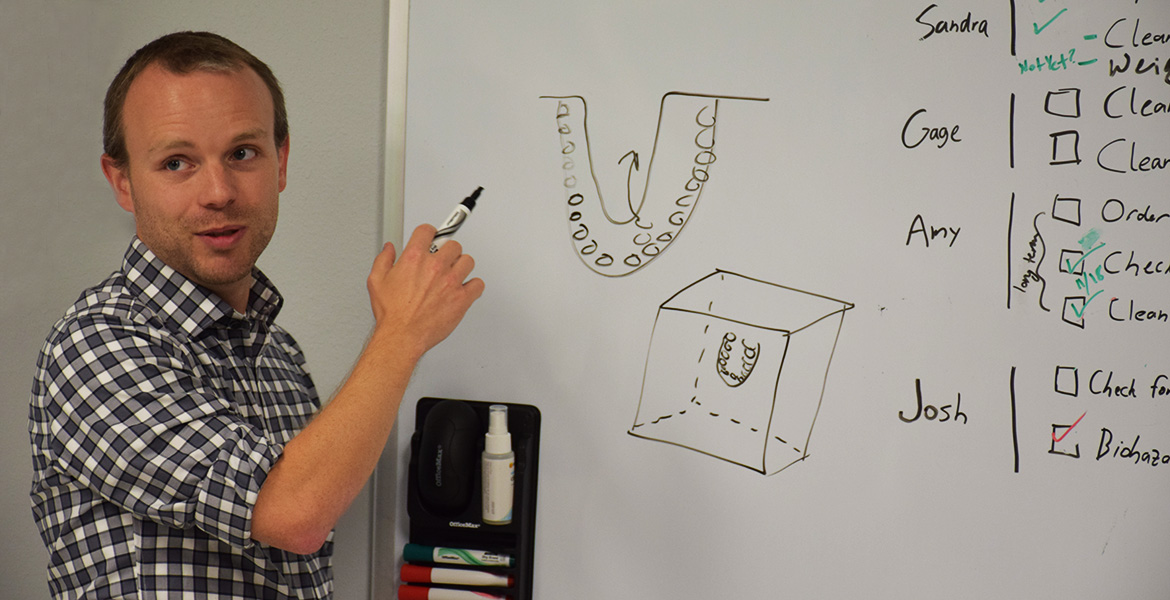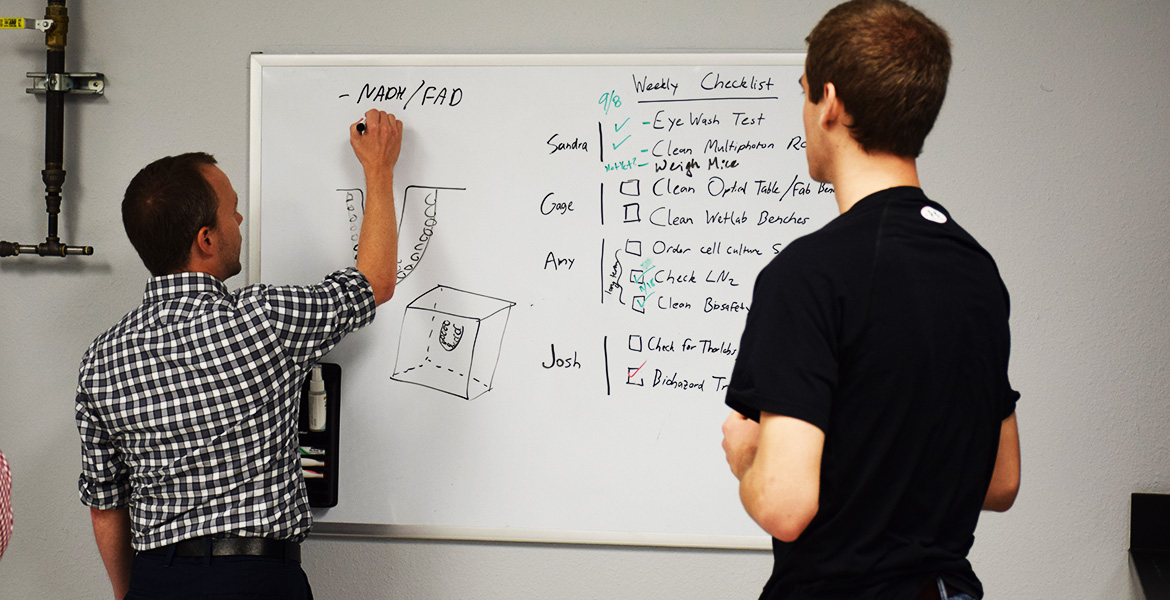Dr. Timothy Muldoon is an Assistant Professor in the Biomedical Engineering Department at the University of Arkansas. He is also the Principal Investigator of the University’s Translational Biophotonics & Imaging Lab.
UArk BME: Did you always know you wanted to pursue Biomedical Engineering? What attracted you to the discipline?
Muldoon: Yes, actually, since I was in high school I had thought about Biomedical Engineering. I was always interested in the application of mathematics and physics to engineering problems, and the humanitarian aspects of Biomedical Engineering specifically were attractive to me. It’s a dynamic and active research field that is both technically interesting and has great potential to significantly impact peoples’ lives.
UArk BME: What are you researching now?
Muldoon: Our overall research goal is to use optical methods to improve our fundamental understanding of human diseases (gastrointestinal cancer is a major focus within my research group) and apply this knowledge in ways that can help clinicians better diagnose, treat, and monitor patients. Our hope is that optical technologies— which can be built into small, portable and inexpensive systems— will disseminate these discoveries to a broader range of patients, from rural areas of the United States to the developing world.
UArk BME: In layman’s terms?
Muldoon: Building cost-effective and portable tools using lights and cameras to help doctors diagnose and treat patients.
UArk BME: What’s your favorite class to teach here at U. of A?
Muldoon: I’ve taught three classes here at U. of A to date: Introduction to Biomedical Engineering, Biomedical Instrumentation, and Biomedical Microscopy. I think because of my research interests, my favorite would be Microscopy. I also enjoy working with the students in this class to develop their writing and presentation skills, as a semester-long project is one of the major assignments during the course.
UArk BME: You’ve been a mentor to seven students since the Biomedical Engineering Department began in 2012. What have you most enjoyed about being a mentor here?
Muldoon: I’ve enjoyed mentoring both Honors and non-Honors undergraduate students. I’m able to spend more face-to-face time with them than I can in a course of 50 or 60 students, and I get to see each of them make progress in their research, learn new skills (many of which they are initially intimidated by, like programming), and grow in their ability to independently pursue an idea in the laboratory.
UArk BME: As Departmental Honors Coordinator, you created a research symposium for students to showcase their work at the end of the year. What’s most impressed you about the symposium?
Muldoon: The Symposium was created to reflect the style of presentations that students, postdocs, and faculty encounter at professional scientific meetings. Students are required to distill their experiences and results down to a single poster and brief presentation to communicate what is often a complex, multi-year project. This can take a lot of work and many revisions to get it right. The students who have presented at this Symposium have often impressed me with the high level of their work and presentation quality— many are functioning at a graduate student level already.
UArk BME: What makes being a Biomedical Engineering at the U. of A. different than being one elsewhere? What sets this program apart?
Muldoon: We’re currently in our fourth year as an independent department. With that comes a lot of excitement and energy about our growth in multiple areas— from undergraduate and graduate student populations as well as increasing the number of faculty members. We have a very research-active faculty which leads to a lot of close interaction between us and the students. The face-to-face time I get to spend with graduate and undergraduate students is probably highly unique among most Biomedical Engineering programs.
UArk BME: You were recently honored by the University’s Honors College for going above and beyond to provide an exceptional experience for students. Accompanying the honor is $1,000 to support undergraduate research. Any specific plans for where that money will go?
Muldoon: It was quite an honor to win that award; I don’t have specific plans for the award yet but it will likely go to support travel and registration costs for an undergraduate student to present at a national conference in the near future.
UArk BME: What BME research are you most excited about in the future?
Muldoon: Most of my work is in optical imaging, and so I’m very excited about the role portable cameras and smartphones will play in the future. We’ve seen an explosion of highly sophisticated imaging cameras integrated into phones that are carried by a significant percentage of the global population. I think the applications for healthcare will be tremendous in terms of developing novel diagnostic approaches to improving the way we do telemedicine and doctor-patient communication.
UArk BME: A Biomedical Engineer learns she is going to be stranded on a deserted island, and will be allowed to bring only three items with her. What does she bring?
Muldoon:
- Swiss army knife
- Flint and steel
- Satellite phone




